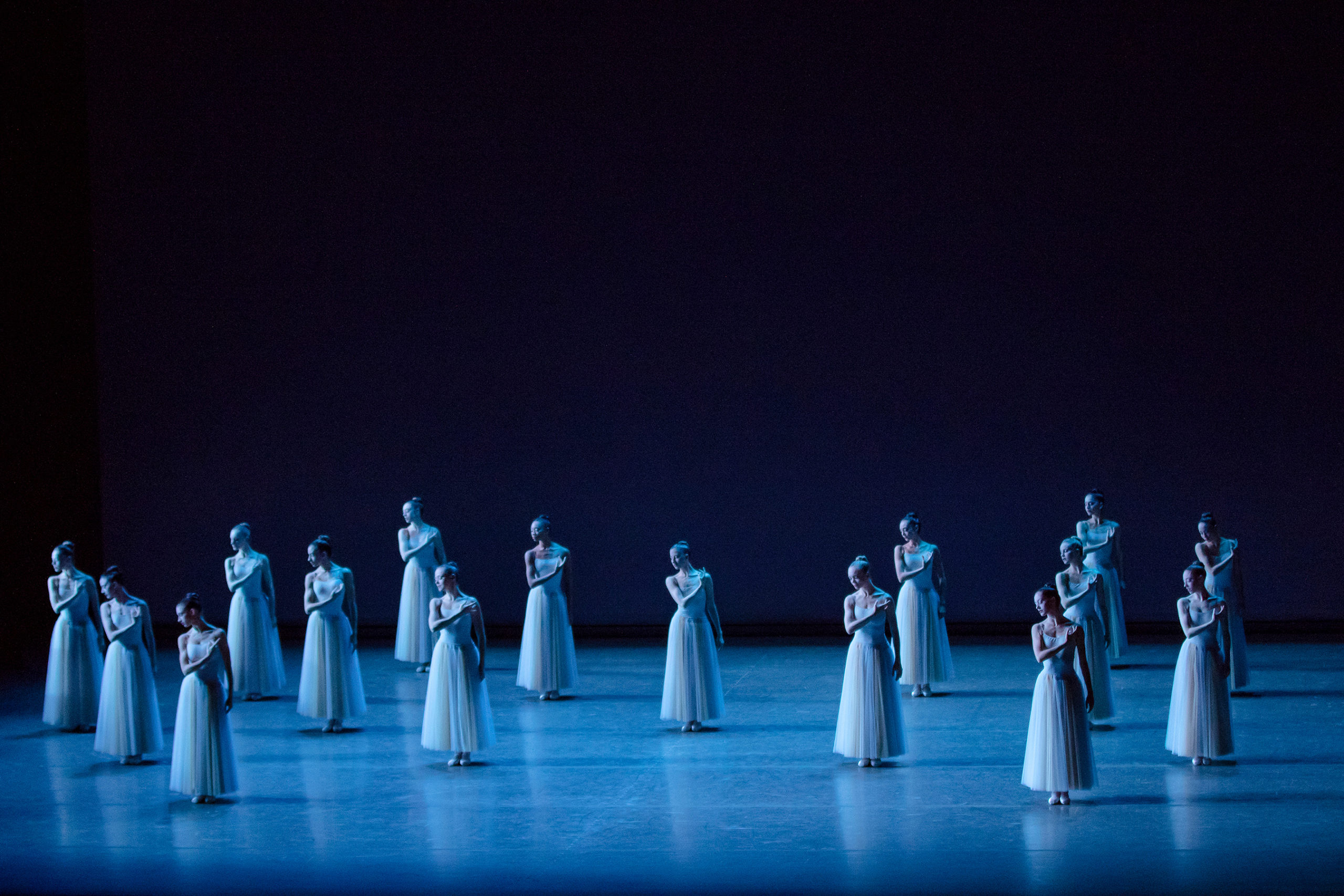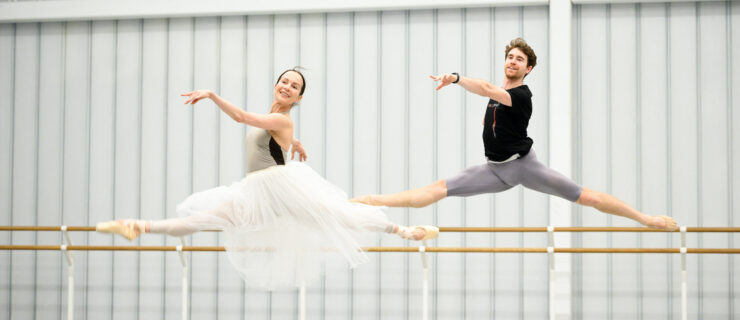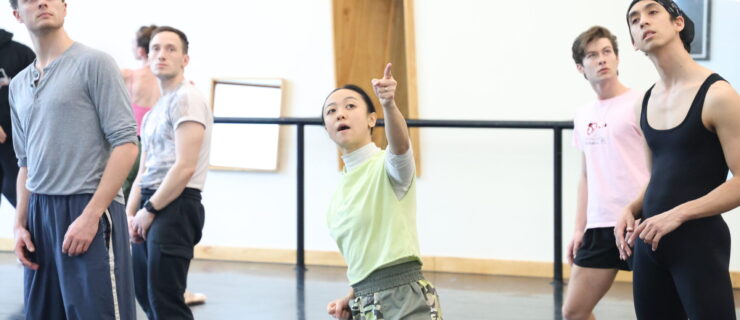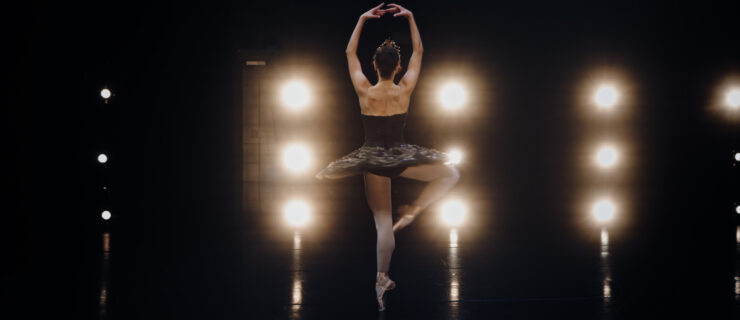Toni Bentley’s New Book, “Serenade,” Delves Into a Beloved Balanchine Classic
Toni Bentley reached ballet’s heights as part of the last group of New York City Ballet dancers to work with George Balanchine. Even before a hip injury forced her into early retirement, she had penned Winter Season: A Dancer’s Journal, a beautiful take on daily life in the company. After Bentley published Winter Season, Suzanne Farrell asked her to help write her autobiography, Holding On to the Air. Bentley followed that book up with three more: Costumes by Karinska, on Balanchine’s great Russian costumer, Sisters of Salome (in Bentley’s words, “an exploration of the Biblical story of Salome and four real women at the turn of the 19th-century who danced her”) and The Surrender (a “very personal memoir about obsessive love”).
Her most recent book, Serenade: A Balanchine Story (Pantheon Books, $30), comes out in April 2022. Beautifully composed, it provides a three-dimensional experience of Balanchine’s titular ballet: historical, artistic and personal. Between chapters narrated in the first person—putting readers onstage within the ballet’s split-second timing and exact positioning—Bentley provides fascinating background on Balanchine and how he created and renewed Serenade over the years. She also delves into the choreographer’s “relationships” with his artistic forebears—composer Peter Ilyich Tchaikovsky and choreographer Marius Petipa, among others—and the lineage of dancers who have performed Serenade since its inception. Bentley lovingly handles each of these topics in great depth, with the very particular insights she has gained from her dancing years and through thorough research. As in all her books, she gives generously of her finely tuned emotions, her experience and her own polished opinions.
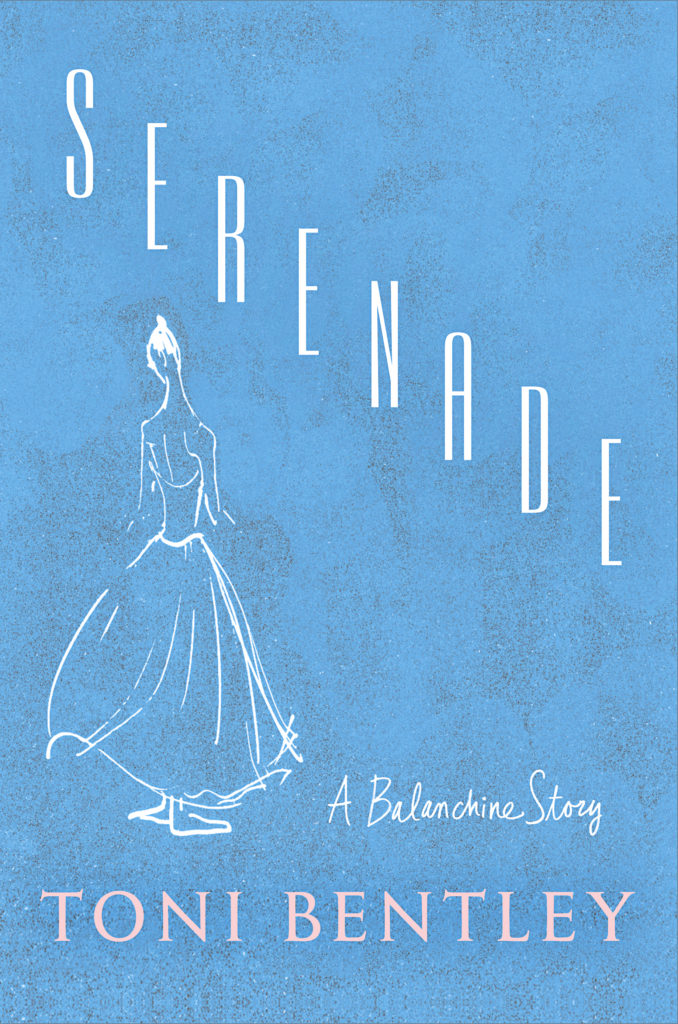
In short, Serenade: A Balanchine Story has earned a place on the shelf, especially for anyone who loves ballet. Pointe caught up with Bentley by email to talk more about her book and writing process.
Can you tell us about your dance life?
I began dancing with a weekly ballet class starting about age 5 and was then accepted into Balanchine’s School of American Ballet in New York. At age 17, I became an apprentice and then a member of the New York City Ballet. I danced with the company for 10 years, spanning the last years of Balanchine’s life. Sadly, I had to stop dancing due to a bad hip.
How did you learn to write?
Well, I never learned to write at all. I barely graduated high school, having become a professional dancer so young, and I have never taken a writing course. But around age 14 I discovered books—not through school, but through a beloved friend. I read and read and felt a very deep connection with what I was reading, marked by my intense black underlining on page after page. About age 16 I began a diary, and once I started I couldn’t stop. These spiral notebooks (now legal pads) were governed by only two things: no would see them, ever, therefore I was free! So telling the truth about whatever I wanted became my guiding propulsion. Some of that diary became my first book, Winter Season.
I don’t “think” about how to do this. The great event is in the moment of actual writing; what I see, feel, know, what I don’t know, what I suspect. Because writing is a second, unexpected, unschooled occupation, I perhaps profit from a frequent sense of that original “freedom” I felt in my teenage diary, when I knew no one would ever read what I wrote.
Why did you center George Balanchine in this book?
As I write in Serenade, once you are in George Balanchine’s world, his orbit, everything is about him! It simply cannot be otherwise when such an utterly unique human being and his transient, exquisite, transcendent work is your daily life.
In the book you discuss how NYCB ballet master John Taras invented a form of dance notation to stage Serenade. For readers who are unfamiliar with dance notation, could you talk a little bit about it?
I’m not an expert on dance notation and certainly do not read any of the currently existing forms. What interests me on the subject is the hundreds of years of attempting it, and that while some forms exist and some dances have been re-created using notations, it remains full of massive difficulties. These difficulties—unlike musical notes on a score, which are precise, clear, exact and readily reproducible—are the very qualities of nuance, of three, even four, dimensions, of anatomical differences in size and symmetry in any specific dancer, of varied musical tempos that together make a great dance. They simply cannot be accurately notated, for dance is a living, breathing event in real time. This transience of the moment is inseparable from the beauty of a ballet.
How did you research Tchaikovsky?
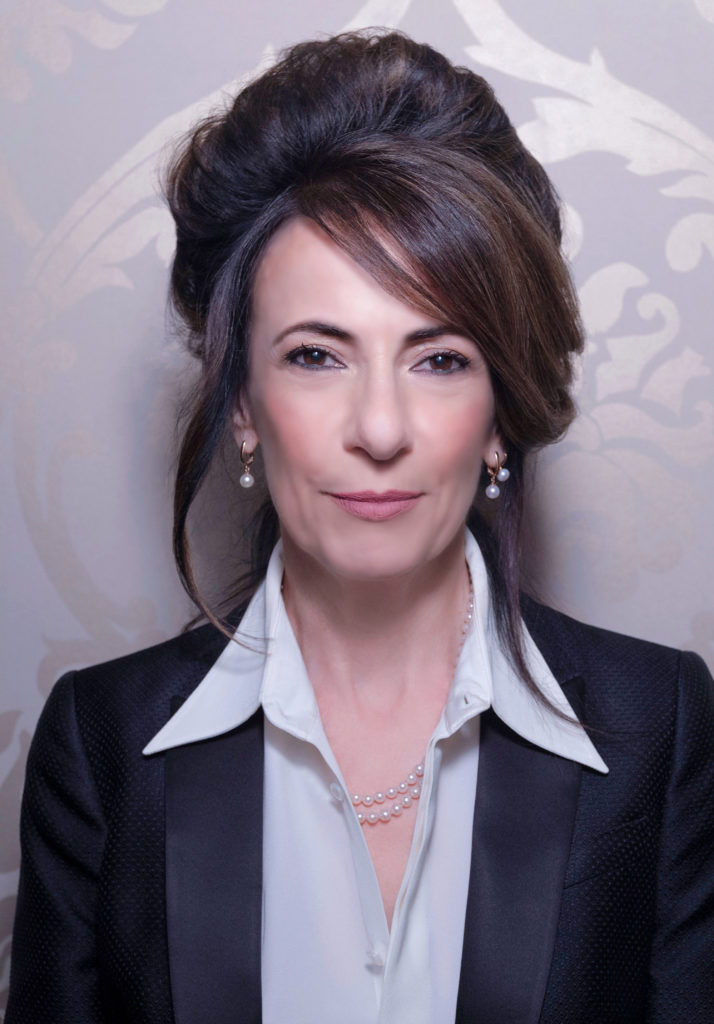
Tchaikovsky’s ballets—Swan Lake, The Nutcracker and The Sleeping Beauty—are three of the central cornerstones of the artform. In the late 19th century his music transformed ballet to a new, higher level with serious yet passionate music of real classical, symphonic value. Balanchine adored Tchaikovsky, spoke to us often of him and regarded him as his friend, his collaborator—though the composer died shortly before Balanchine was born. I grew up, as does every young ballet dancer, with Tchaikovsky as the “playlist” of my young life. I focused the story I tell of Tchaikovsky on the situation surrounding his writing of Serenade for Strings. As I did throughout the book, I simply wrote what moved me, what I found of great interest—and Tchaikovsky is a musical genius with a deeply moving, human life. I wanted to make him more real, for myself, and perhaps the reader. I rather fell in love with him.
How did you arrive at your book’s structure?
I knew that the experiment would be to go inside the ballet, to write from onstage, knowing it would be difficult. And for structure, why try to improve Balanchine’s and Tchaikovsky’s own structure of the ballet! As the dance progressed through Serenade’s four movements, I found many places where it felt not only natural but necessary to take a brief tributary to discuss something particular, be it turnout, or pointe shoes, a particular dancer or even ballet history. I see Serenade: A Balanchine Story as my final word on Balanchine. My four books on this magical world—Winter Season, the Farrell autobiography, Costumes by Karinska and now my new one—serve, for me, a single abiding purpose: bearing witness to the origins, the beauty, the morality of Balanchine and the miracle of his NYCB. This alchemy will never be seen again.
